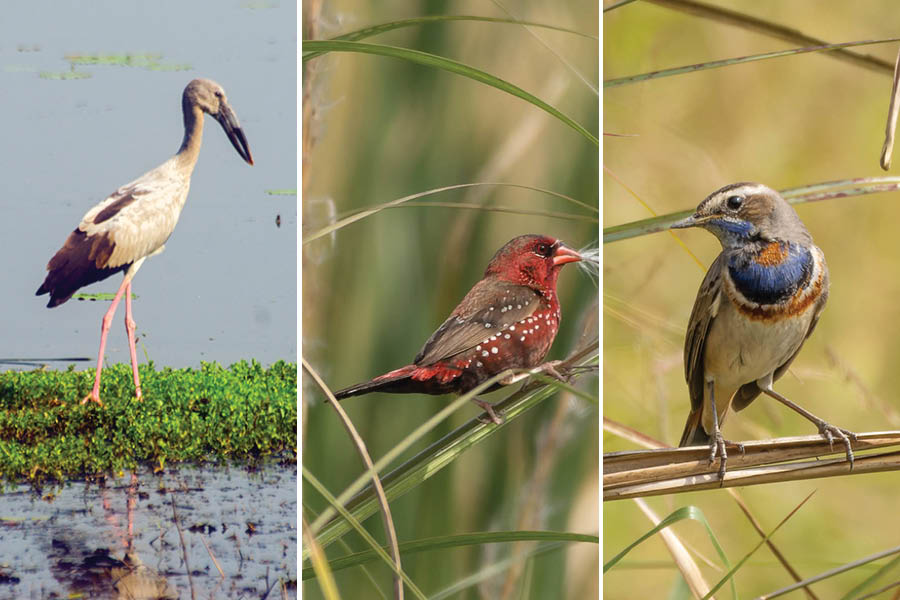Come winter and Baruipur, a neighbourhood on the southern fringes of Kolkata, is buzzing with migratory birds, which includes some very rare species as well. My Kolkata tries to catch glimpses of some of those.
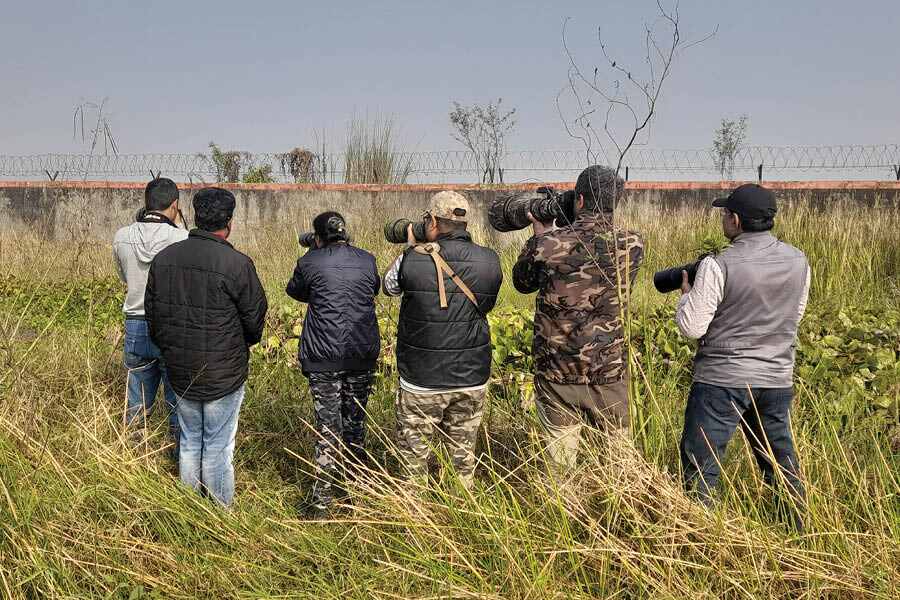
Photographers at the Baruipur grasslands Rangan Datta
The time to enjoy the chill in Bengal has finally arrived. And what better way to spend the wintry mornings outdoors than birding. The arrival of migratory birds makes it an interesting hobby. These birds fly from far and wide and temporarily settle in the relatively warmer regions. Despite the burgeoning population, several birding spots in and around Kolkata welcome these feathered guests every year. Rabindra Sarobar, Alipore zoo and Santragachijheel are some of the hotspots to spot the winged guests from far-off land. Sadly, this year the migration has been less. Experts blame it on Ukraine – Russia and Israel – Palestine war, while others put the blame on global warming. Don’t be disheartened, there is some ray of hope. Just head to Baruipur.
Blue Throat
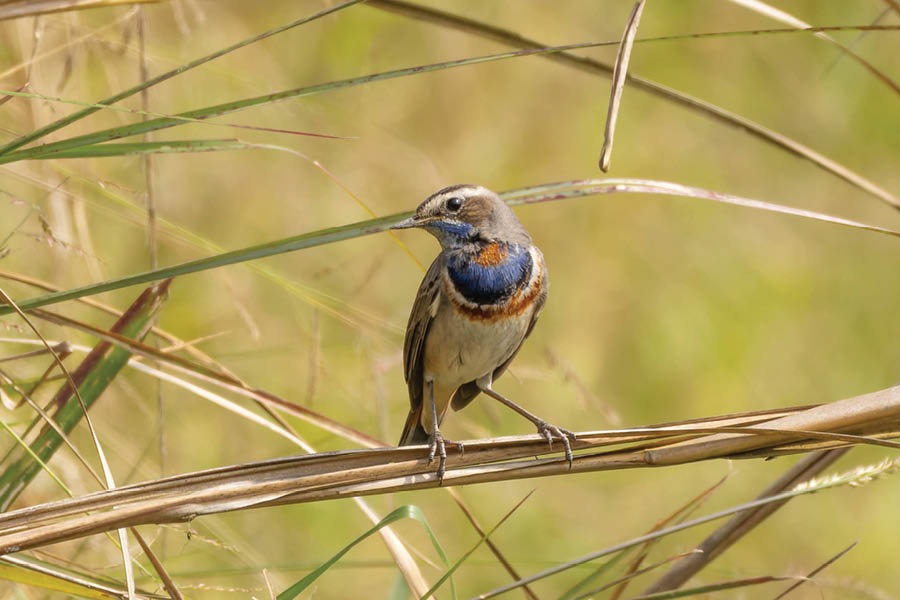
Tisha Mukherjee
This stunning bird comes with a blue and red throat and flashing reddish tail (only males have these features). This common mynah (shalik) sized bird comes from the Siberian region. The Siberian Rubythroat is a close cousin of the Blue Throat and as the name suggests, has a red spot (only male) instead of blue. Both are found in Baruipur this winter but the Siberian Rubythroat is difficult to spot.
West Himalayan Bush Warbler
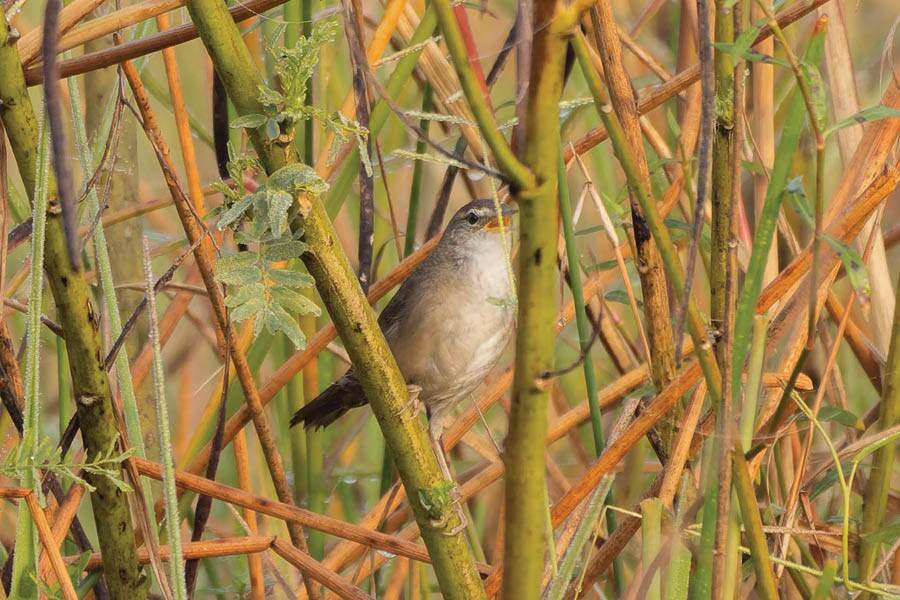
Tisha Mukherjee
It is a small (sparrow size), brownish bird with a thick, rounded tail. As the name suggests it migrates from Western Himalayas (Kashmir region). Baruipur is also home to two other similar warblers – Baikal Warbler and Spotted Bush Warbler. All of them are very similar looking and difficult to distinguish. According to experts they are best identified by their calls.
Pallas's Grasshopper Warbler
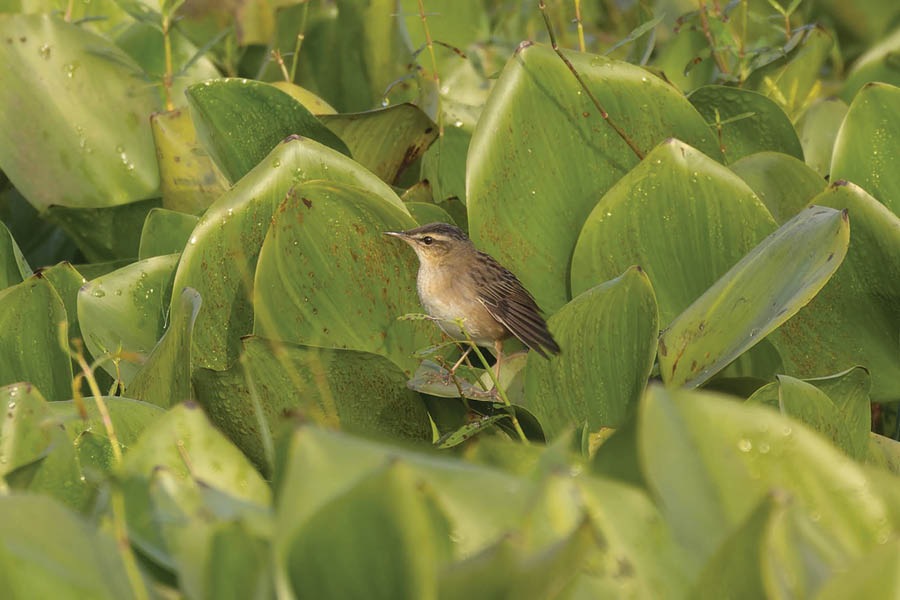
Tisha Mukherjee
It is named after German zoologist Peter Simon Pallas and is a resident of Mongolia, Northern China and Korean Peninsula. During winter it migrates to the Indian sub-continent and even beyond, to Indonesia. A very small greyish bird with a short tail. It is also known as Rusty Brown Warbler.
Clamorous Reed Warbler
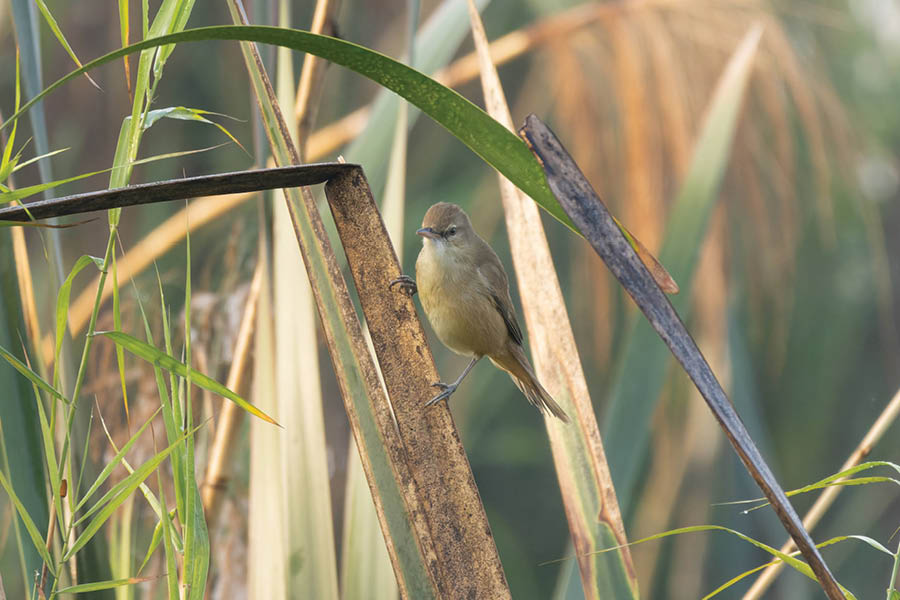
Tisha Mukherjee
It has a long tail and pointed bill and is slightly bigger than its previous counterparts. It is generally non migrant in nature but there are records of local migrations, mainly restricted within the Indian sub-continent.
Eurasian Wryneck

Tisha Mukherjee
As the name suggests it spends the summer all across Europe and parts of Siberia. In winter it migrates to central Africa and to south and south-east Asia. It is not a warbler but belongs to the woodpecker family. It is a small, slim and elongated bird with broad black stripe down middle of crown and back.
Red Munia
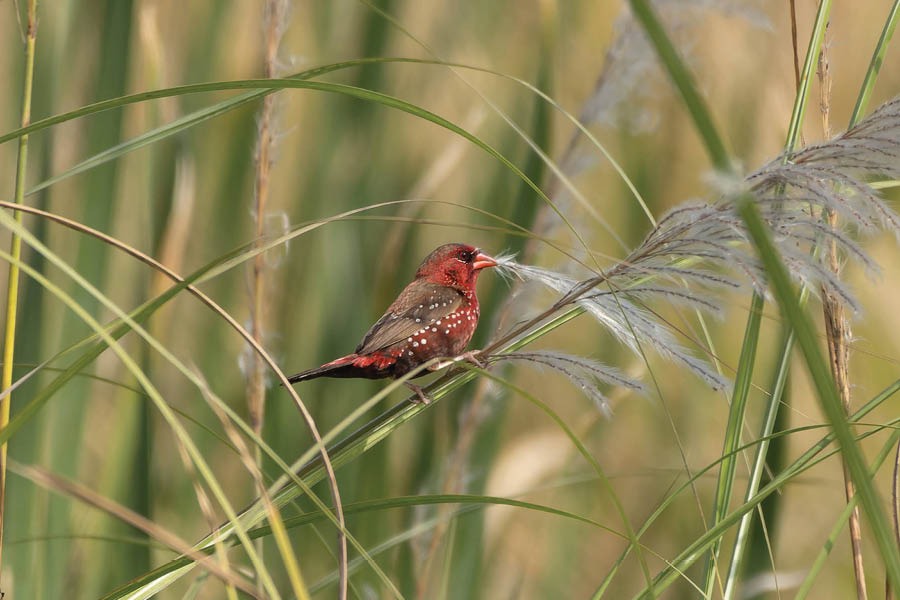
Tisha Mukherjee
This is probably the most brightly coloured bird of Baruipur grassland. The male version of the sparrow-sized bird is largely red and covered in white spots with dark wings and tail. Females are grey with a rufous rump. This is a non-migrant and found throughout the year in Baruipur.
Oriental Darter and Asian Open Bill
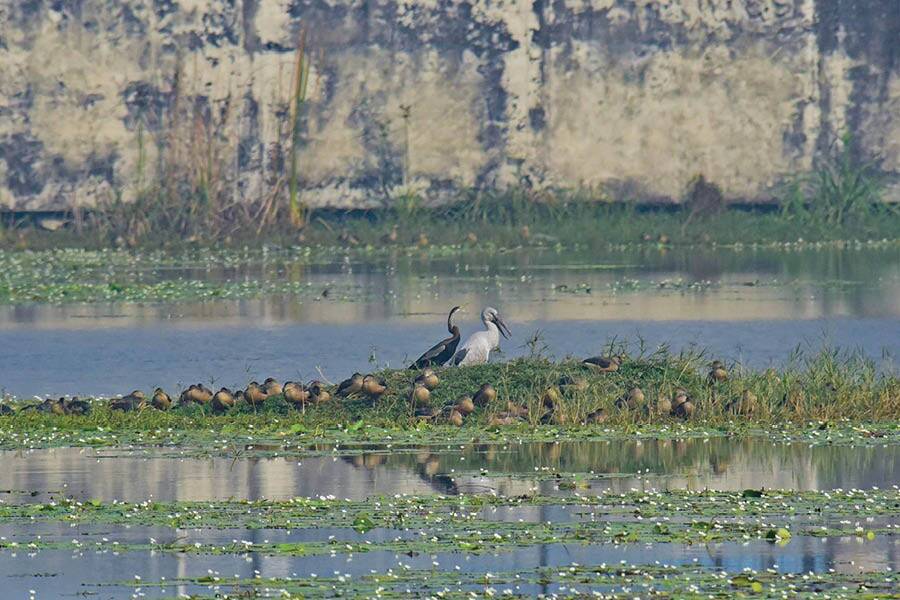
Oriental Darter (left) and Asian Open Bill (right) with a group of Lesser Whistling Duck at the pond in Baruipur Suvendu Das
The warblers, wryneck and munia are extremely small birds and don’t usually appear in groups. Apart from the red munia all the above birds have an ability to camouflage with the grey background of dried grass. This makes spotting extremely difficult. Photography is even more difficult and needs heavy duty gears (both in terms of money and weight) and tons of patience. But don’t be disheartened, Baruipur doesn’t disappoint even the most novice birders. Apart from these small wandering birds Baruipur is also home to several aquatic birds. The pond sandwiched between the DRDO and West Bengal Tele Academy is the hub of water birds and it is the best spot to start bird watching in Baruipur. Some of the common water birds of Baruipur are Lesser Whistling Duck, Grey Headed Swamphen and Asian Open Bill. The pound is also the breeding ground of different types of cormorants, herons and egrets. Common Moorhen, White Breasted Waterhen along and Oriental Darter are found in abundance. The Oriental Darter is known as snake bird for its long slender snake like neck. The pond also lies at the entry of the Baruipur Birding zone. The Baruipur birding zone is spread over a large area and a personal vehicle is absolutely necessary for exploring it.
Lesser Whistling Duck
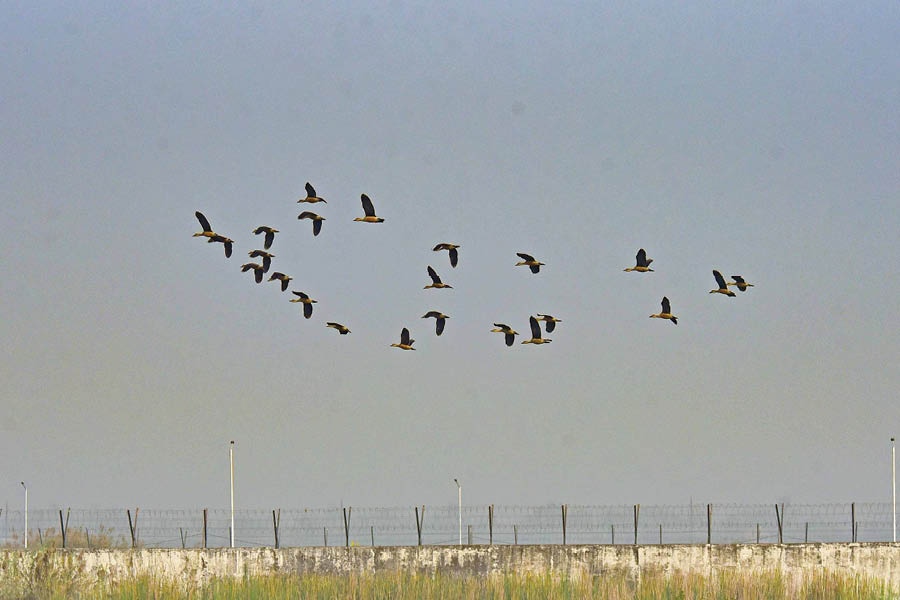
Suvendu Das
Visitors to Baruipur are welcomed by folks of flying Lesser Whistling Duck. They are seen swimming on the pond next to the DRDO campus. These greyish coloured birds are local birds with records of short migrations. This year the Santragachi Jheel has been home to a large number of lesser whistling ducks.
Grey Headed Swamphen
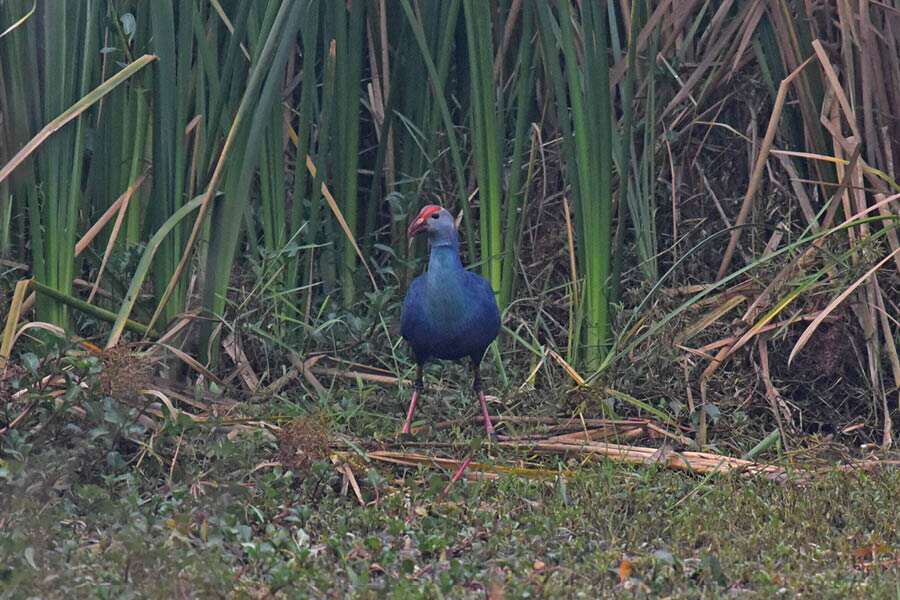
Suvendu Das
A large aquatic bird with a bright shade of bluish-purple. A red beak and forehead shield makes it easy to spot and identify. Usually spotted swimming in the pond next to DRDO and occasionally on the grasslands.
Asian Open Bill
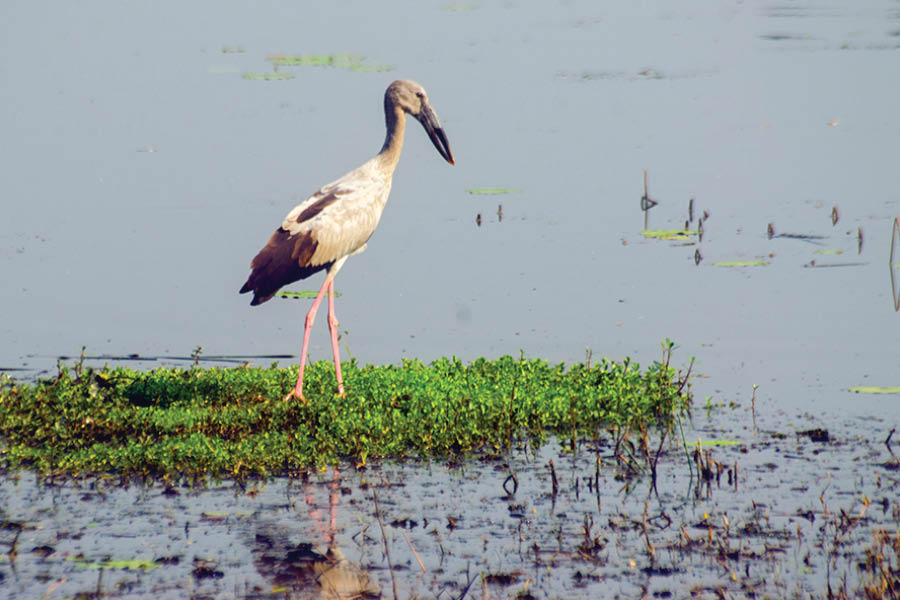
Rangan Datta
These large stork-like birds are found in abundance in Baruipur. Large folks can be seen flying overhead or wading through the pond waters. The beak has a gap even when it is closed and hence the name. It is a resident bird with a local migration record.
Common Chiffchaff & the future of Baruipur birding zone
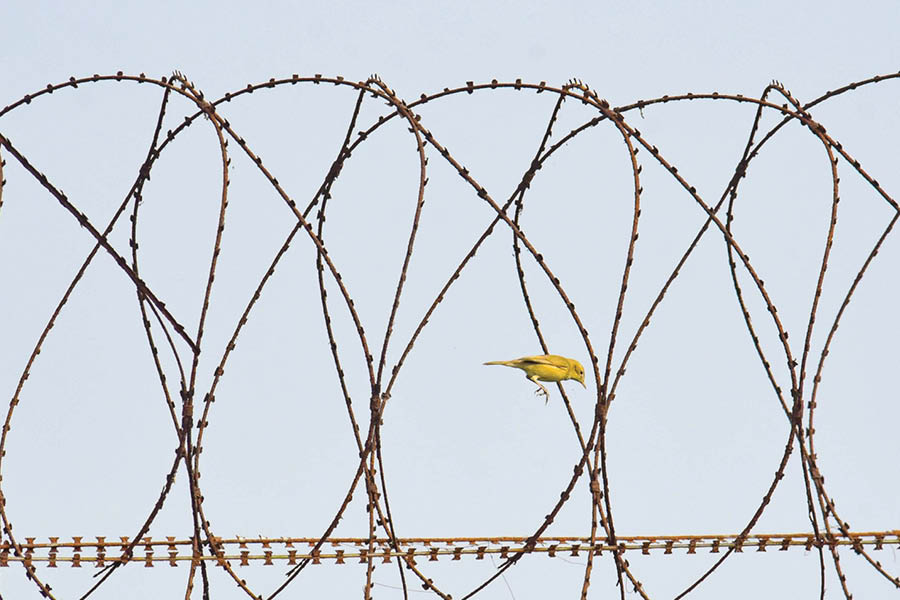
Suvendu Das
Common Chiffchaff is a tiny warbler that flies all the way from North Europe and Siberia to the grasslands of Baruipur. The barbed wires of the international borders are no obstacles along his long journey. But little did he know that the barbed wire that he is jumping across are a real threat to his foreign habitat. Baruipur is no protected area, rather it is an industrial area which also contains a jail. The area will soon be occupied by DRDO along with other institutions and corporate offices. The grass land will soon turn into a concrete block but till that happens Baruipur remains a haven for feathered guests from far-off lands.
